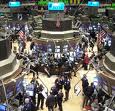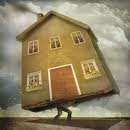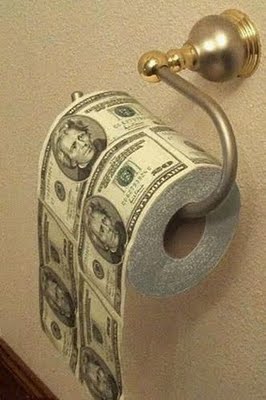Home > Stagnating economic crisis in the U.S..

The euphoria of Wall Street (and by extrapolation from the rest of world stock) following the results of so-called "stress test" of financial institutions conducted by the U.S. administration and the drip of negative economic data below the most pessimistic forecasts would have helped the overweight green shoots of the economy (estimated 3% of GDP by 2010 and substantial improvement in results of the Banks and Wall Strett).
It would thus produced a change in market expectations, there are now convinced that the bailout policies (Support Program for troubled assets (TARP) carried out by the government and the successive reductions in interest rates of Fed would have eased the liquidity problems of financial institutions, but not prevent the banks need more follow-capitalized and capital injections due to the existence of emissions in the housing sector (mortgage bonds) and toxic assets (subprime mortgages) that must be purchased by the bad banks (banks bad) or continue with the trickle of nationalizations, practices that involve both a loss of free competition.
This together with the continual increase of foreign debt will help to increase the risk premium and credit is still not flowing normally to real interest rates, which coupled with the fact that yield differentials between the public debt issues between the various first world countries have increased in recent months (which carries a more expensive and more difficult to obtain external financing), the slowdown of exports due to the strength of the dollar against the euro combined with the debt crisis live in the European Union could exacerbate the obvious risk of stagnating economic crisis in the U.S..
Fed doubts about economic recovery: The Federal Reserve officials expressed greater caution about the U.S. economy, suggesting that rates of short-term interest could remain at historic lows until next year to support growth and kept the band for the federal funds rate the range of between zero and 0.25% and drew a more pessimistic scenario of future financial conditions and maintenance of low inflation scenarios still insufficient due to increased domestic consumption (3.6%) since the adoption of implement extraordinary measures such as quantitative measures (Quantitative Easing) to increase the monetary base did not move to pressure on U.S. prices due to excess capacity of enterprises and provide resistance to the financial system.
Severo stagnant real estate market: The U.S. banking sector could suffer losses of up to $ 250,000 million for commercial property in this crisis and more than 700 banks could fail because of its exposure to commercial real estate, with the emergence of a stock of 2 million households will not find buyer until 2012 .

Thus, banks seek tenders, building management companies of real estate assets and the implementation of aggressive measures, disposal of the seized apartments to collect in their portfolios (which are considered illiquid assets), which will cause drastic declines in property prices that hover around 60% compared to 2007 (prices artificially revalued due to the speculation of the last decade.).
Moreover, the apparent revival of the housing market in the first quarter of 2010 would have been only a mirage caused by tax incentives., As the Commerce Department reported that sales of new homes in that country fell 32.7% in May , (the largest monthly decline recorded since 1963), as compared with 15% rise recorded in April, is a true reflection of the tendency to mark the rest of 2010.
After the unexpected bump in the sales, fear of W (Double dip) or relapse into recession gripped the global hardwood with widespread falls result of psychosis and, combined with the high indebtedness of the companies could end up producing a new stock market crash that would have the beneficial effect of forcing companies to redefine strategies, adjusting structures, restore its finances and restore its credibility in the market (as happened in the stock market crisis of 2000-2002) and as collateral damage the ruin of millions of small investors are still dazzled by the lights of the stratosphere, the financial starvation of the firms and the consequent ripple effect on the declaration of bankruptcy.

Increasing unemployment rates: The U.S. economy would have created 431 000 jobs last May (unemployment rate 9.7%) due to the temporary employment of 411 000 people to work in developing the 2010 Census (data lower than expected by the analysts, who believed that the U.S. economy this month would create between 500,000 and 600,000 jobs, compounded by a decline in the construction of 35,000 jobs), so that 2010 could be completed according to analysts rates close to 10%, coupled with a predictable public deficit increases to the $ 1.6 billion (9% of GDP) and foreign debt to $ 12.5 Billion for 2010 (90% of GDP) , a historical figure exceeded only during the 2nd World War.
Finally, as a result of lower revenue insurance of the states and the brutal increase in unemployment benefits (8 million unemployed without unemployment insurance) would be ruled out in several states the appearance of financial holes (in December the state of New York would have gone into deficit for the first time in recent history to suffer a deficit of $ 600 million), the filing of federal agencies and the progressive disappearance of the middle classes.

Consequently, we would see a severe worsening of the social divide in the country that would force large segments of the population to rely on social subsidies. (Stamp program would be unemployed in record numbers with nearly 37 million enrollees in comparison to 29.4 million receiving this monthly allowance in 2008), which together with the drastic reduction of social benefits, the revival of xenophobic sentiments in the Southern States and inflammatory harangues of religious leaders like Jeremiah Wright could end up reissue the racial riots of the summer of 1963.
GORRAIZ LOPEZ GERMÁN-ECONOMIC ANALYST




